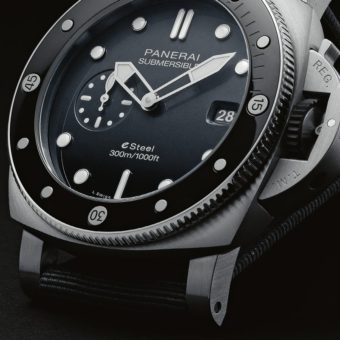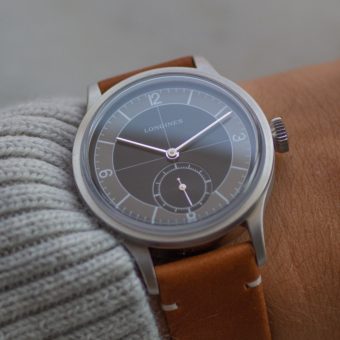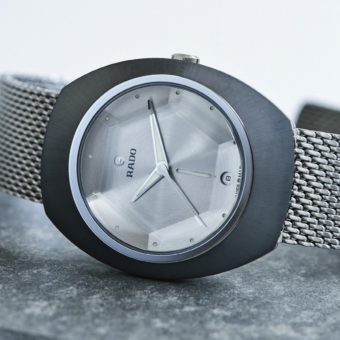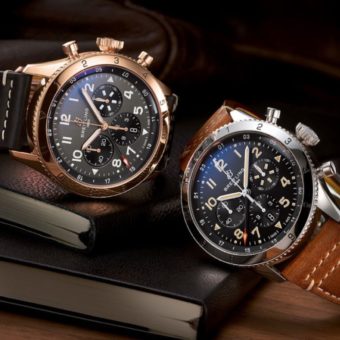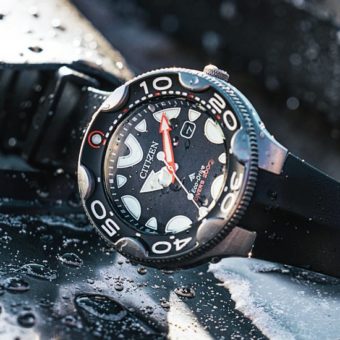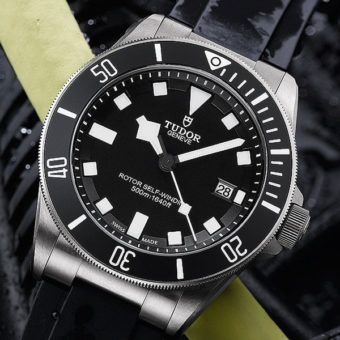The year 2018 saw a proliferation of “micro” watch brands along with continuing popularity for contemporary, vintage-inspired watches, so it seems natural the market also saw significant growth in watch startups working to carve a name for themselves in the industry with “neo-vintage” products. Never far from this conversation has been the French brand Baltic, founded in 2017, which made headlines with its Bicompax chronograph, a piece inspired by 1940s step-case watches. Last year, the brand made an even bigger wave with the reveal of the upcoming Aquascaphe— a competitively priced 1950s- and ‘60s-inspired modern diver.
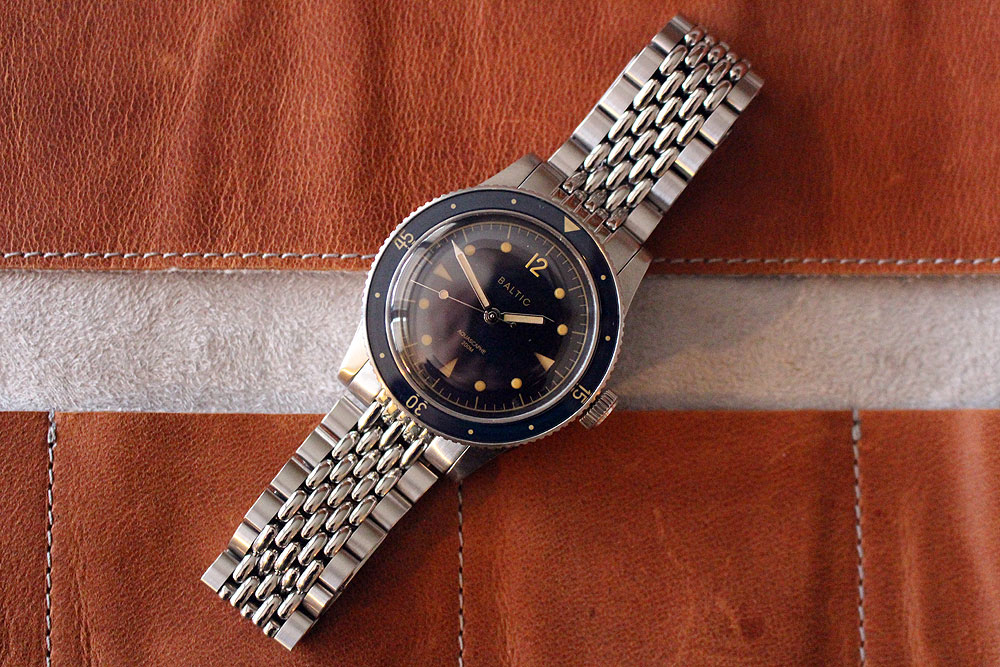
Right off the bat, we find that the Aquascaphe finds its most prominent influence, as its name suggests, in the Blancpain Bathyscaphe. The Bathyscaphe— today reinvigorated in a thriving modern collection— was originally something of a younger brother to the more renowned Fifty Fathom series first developed in 1952. However, Baltic’s founder Etienne Malec mentioned the Waltham dial versions of the vintage Bathyscaphe as the more prominent inspiration. Stylistically, Malec names as one of the great influences on his design process a vintage-watch collection he inherited from his late father, which I suspect may have included a Waltham Bathyscaphe (picture below, via Analog/Shift). These watches were what could well be referred to as “private label” examples of the Bathyscaphe, produced by Swiss Blancpain, primarily for Waltham’s American market. In many examples, the only physical difference between Blancpain-proper models of the Bathyscaphe and American-produced versions is the logo at the top of the dial, with the only other clear difference seen in the significantly reduced price of the Waltham.
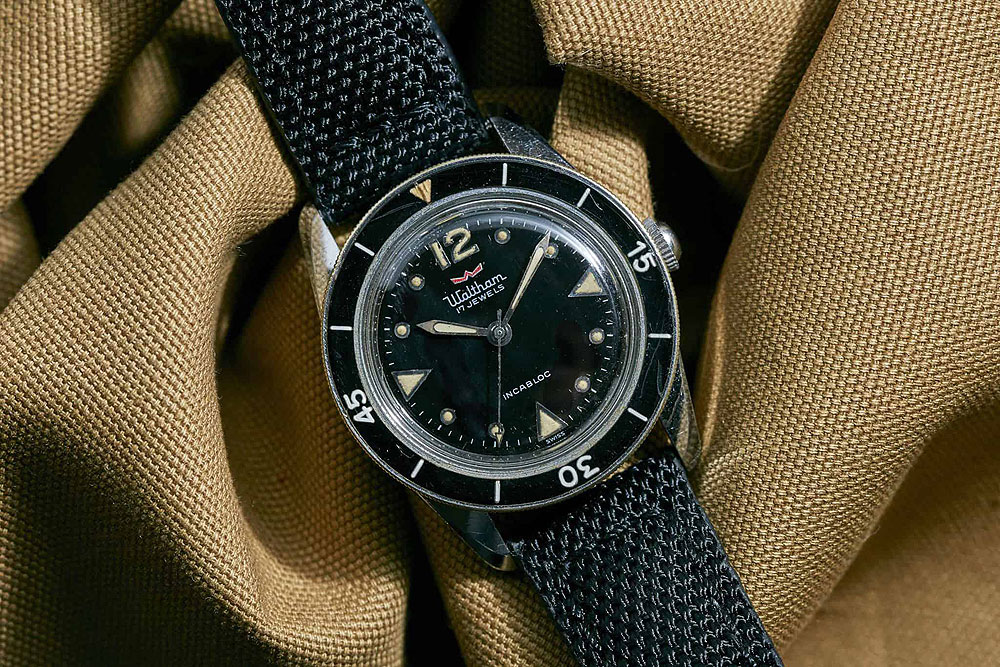
Other, more subtle influences on the new watch, as some other writers have suggested due to its size, style, and depth rating, are in various vintage skin divers like those produced by Longines and Zodiac during the 1950s and ‘60s. These were known for their smaller case diameters, less submarine-crushing depth ratings, and more casual overall style, which made them well-equipped tool watches for the typical man.
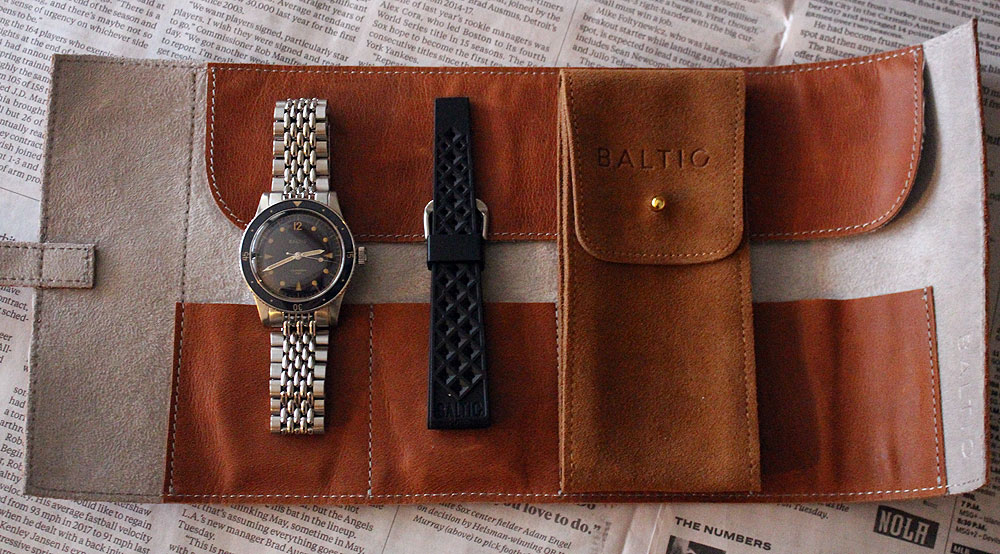
The new watch uses the same steel case as Baltic’s two previous watches— the aforementioned Bicompax and the time-only HMS — measuring 38 mm across (39 mm including the slightly larger unidirectional bezel with its sapphire glass insert). The crown on the side of the watch is screw-down and signed with an uppercase B. The bezel is responsive, with a satisfying click for each movement, and, as on the vintage watches from which the Aquascaphe draws its inspiration, conspicuously avoids a highlighted 15-minute countdown. On the dial is an outer minute track, with printed circles, triangles, and an Arabic 12 at the top of the dial for the hour markers. Sweeping over the dial, and its subtle “Baltic” and “Aquascaphe” script, are pencil hands for the hours and minutes, along with a lollipop-tipped seconds hand. Inside the watch is the Japanese Miyota 9039 automatic movement with a 42-hour power reserve, which, while not winning any awards for accuracy, helps keep the price of the Aquascaphe low while maintaining a reliable mechanical engine.
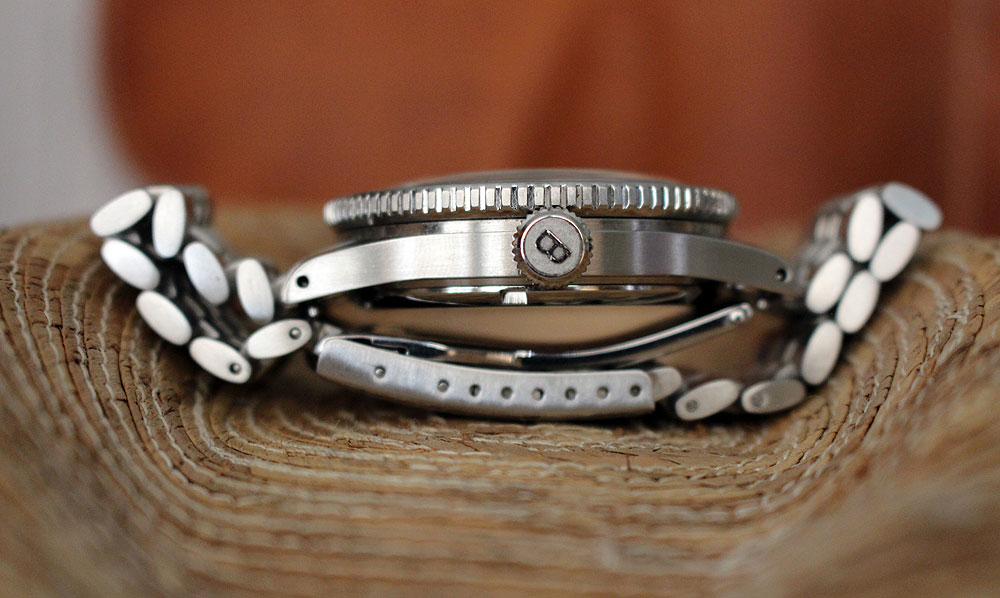
The watch is available in three different color options: Blue Gilt, which uses a sunray blue dial and matching bezel with faux patina accents; Black Silver, which uses a textured black dial and smooth black bezel with white accents; and Black Cream, which simply swaps the white accents on the Black Silver version for faux-patina colors. While the pre-order sale is over, the first of these watches will ship in June, with sales opening again around then — 579 euros (or about $751) on the metal beads-of-rice bracelet and vintage-style rubber tropic strap, and 579 euros (or around $660) on the rubber alone. As of now, Baltic has set up a wait list to be notified once the watch is available through its website.
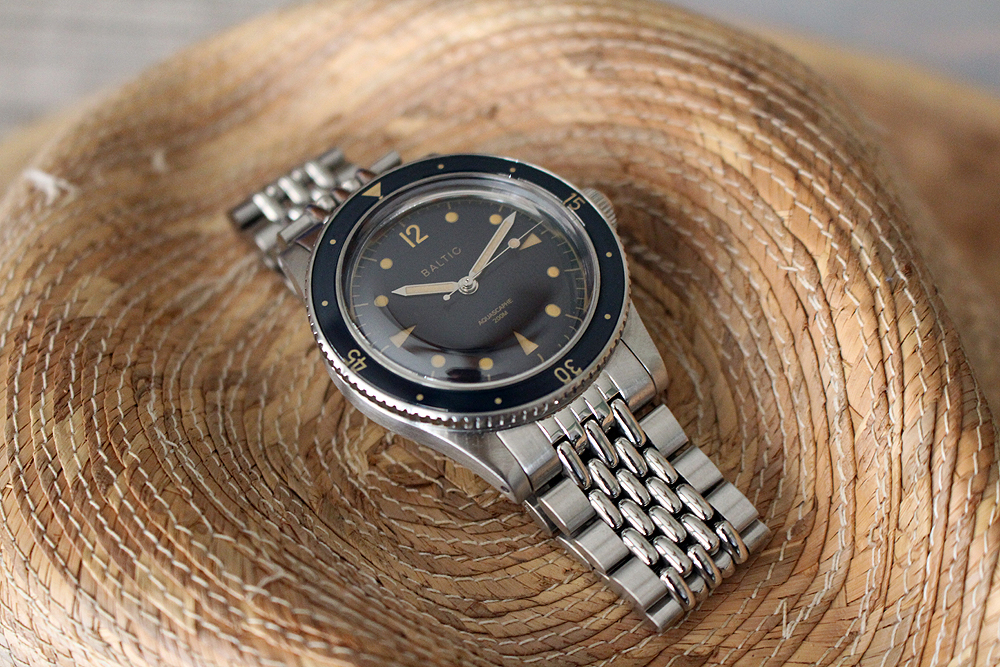
I had the pleasure of reviewing the upcoming watch for a little over a week, and I was quickly impressed by its vintage styling and overall quality. I especially enjoyed the design parallels between the Aquascaphe and historic Bathyscaphes, as in the configuration of the dial, smaller case, slim sword hands, and simpler bezel. Also, the features unique to the modern watch stood out: in this particular watch it was the sunray blue dial, which changed from shining blue to deep purple to almost black depending on the angle of light. On the dial, the triangle hour markers— referred to by the brand as “sandwiched” — were slightly carved into the dial, which was an unexpected but appreciated touch. Another small, though useful detail is in the quick-release clasp on the beads-of-rice bracelet, which allows for a convenient and fast changing between the metal and tropic strap. I would like to see an upgraded movement in a future model, and I expect more color options and limited-edition models to be released in the future, as with the Bicompax, but time will tell on these fronts.
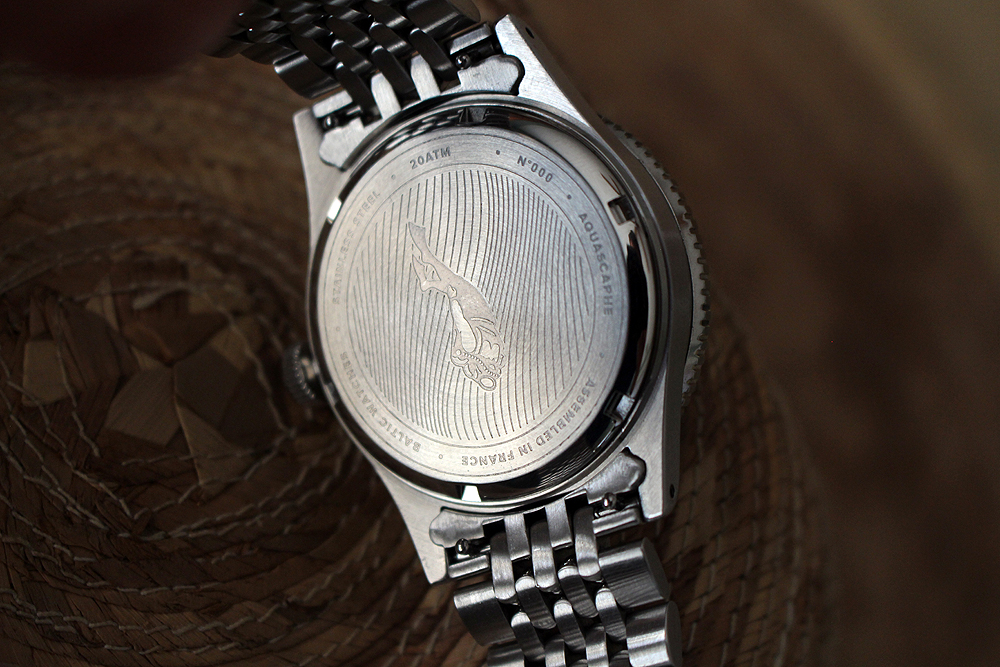
In speaking with Malec, he expressed a great drive in developing Baltic’s collection to offer well-known Swiss brand quality at a more competitive price, accomplishing this explicitly through direct-to-consumer sales, and more implicitly through the use of non-European-made parts. This ethos speaks to the very design influences of the watch, foremost in the inspiration of the less-expensive-but-just-as-good private-label Waltham Bathyscaphe rather than the original Blancpain. It also speaks to a larger trend even outside the “micro-brand” section of the market: quality vintage-style watches don’t need to be incredibly expensive, with two of my favorite neo-vintage watches produced in the past year or so— the Hamilton Khaki Field Mechanical 38-mm and the Timex Marlin— being frequently found for under $300 and $200, respectively. To conclude, I don’t expect Baltic to fall off the radar anytime soon, and with even more vintage-inspired watches in the works as of now, I will likely be covering the company’s next watch sooner rather than later.
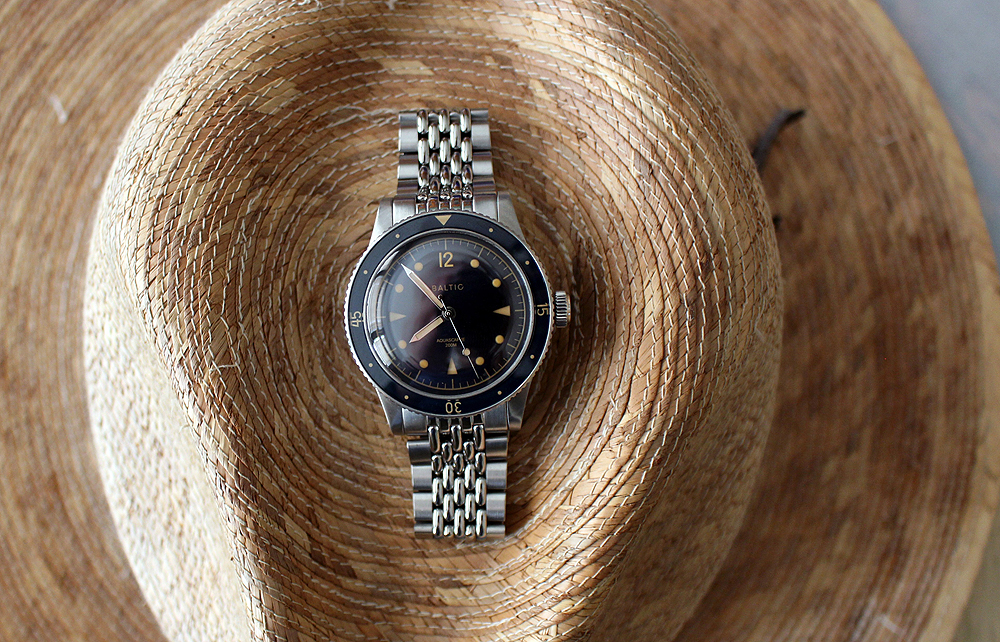
For the most recent article in the “Vintage Eye” series, in which we compare the Citizen Promaster Tsuno Chronograph Racer with its historical inspirations, click here.
Caleb Anderson is a freelance writer with a primary focus on vintage watches. Since first discovering horology, he has garnered extensive knowledge in the field and spends much of his time sharing his opinions among other writers, collectors, and dealers. Currently located near New York City, he is a persistent student in all things historical, a writer on many topics, and a casual runner.

